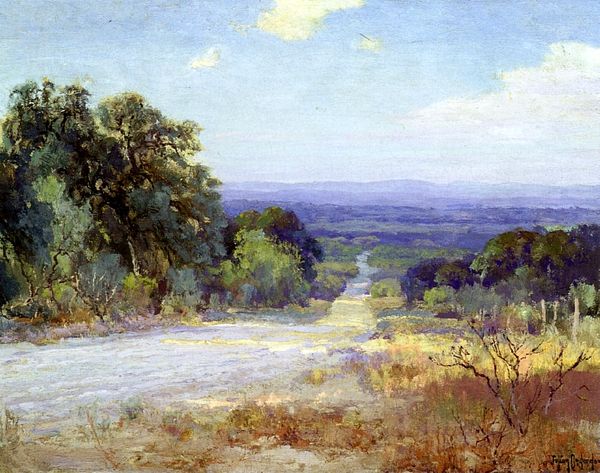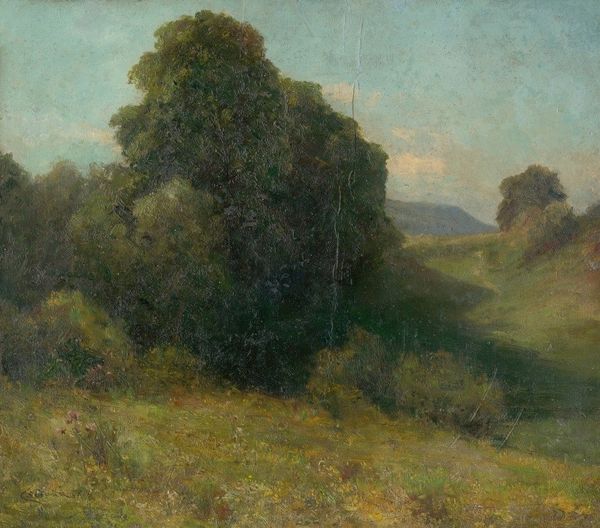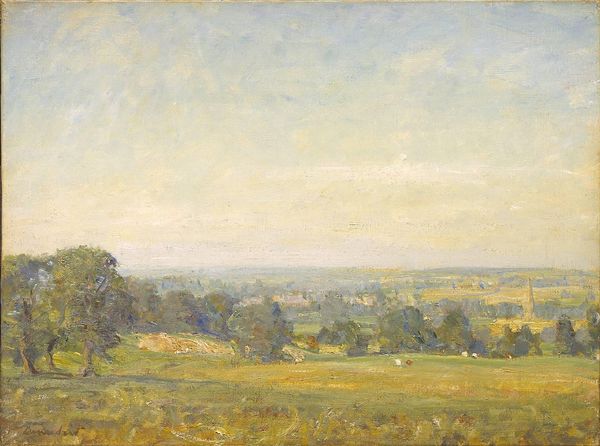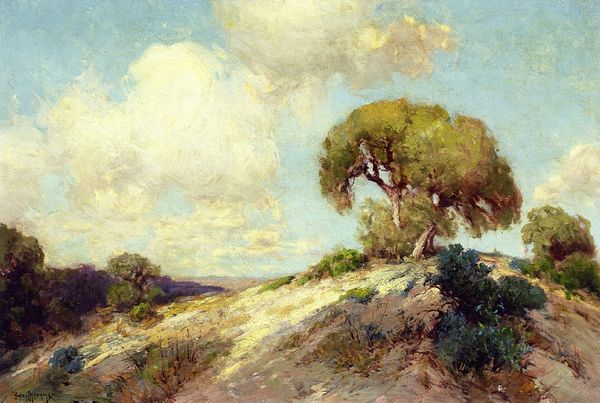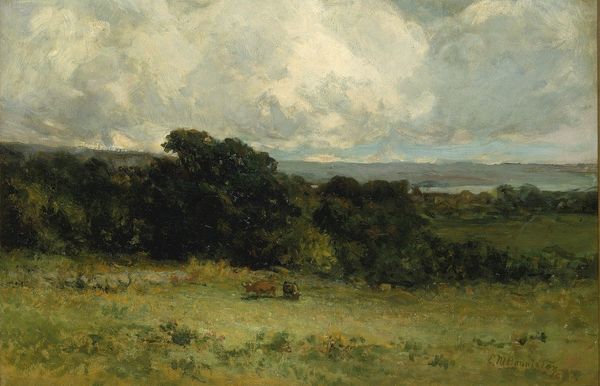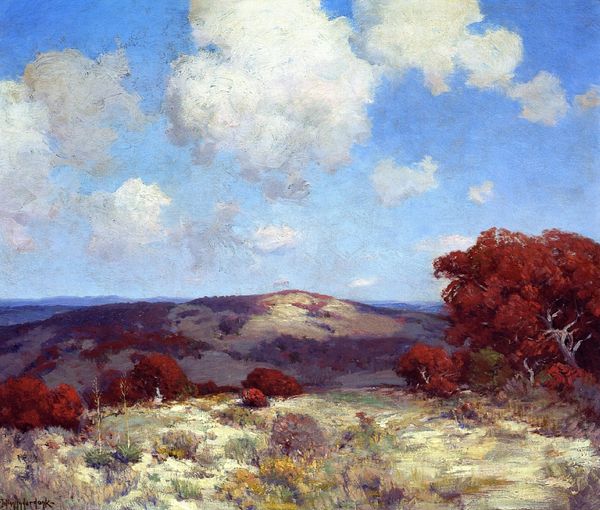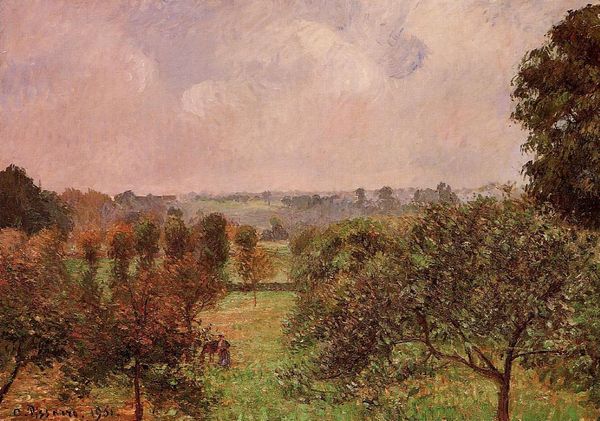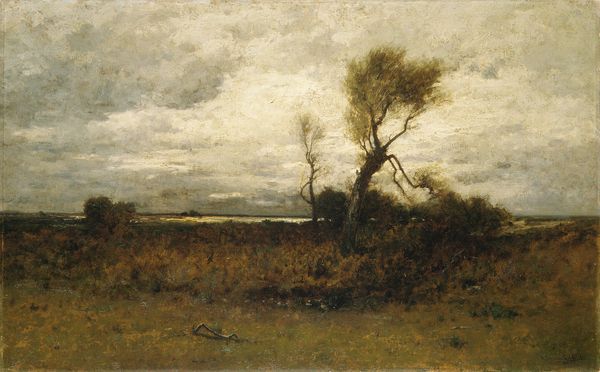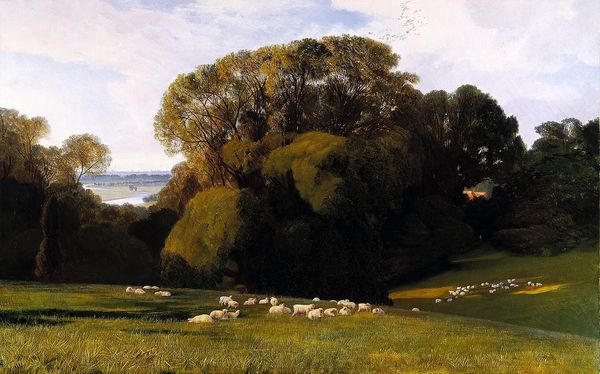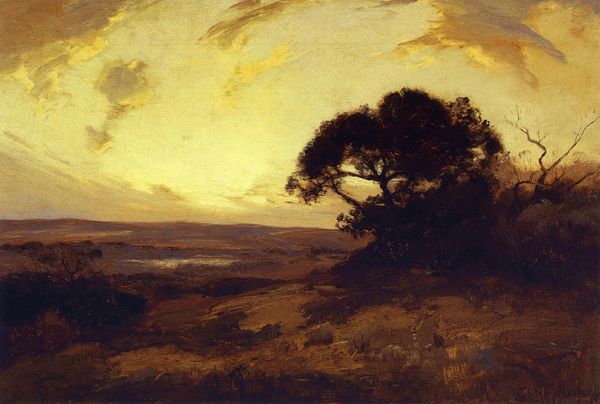
Copyright: Public domain
Curator: Here we have Robert Julian Onderdonk's "Morning in Spring," completed in 1913. The painting is an oil on canvas, done in the plein-air style. Editor: It evokes a feeling of stillness. That gnarled old tree dominates the foreground, its shadow reaching long and blue across the field. Curator: Considering Onderdonk's approach, it’s interesting to think about his process. Working en plein air meant grappling directly with the conditions – the light, the air, even the Texas heat, all impacting the very materiality of the piece. How that immediacy shapes the final product. Editor: The tree's shape definitely draws me in. It reminds me of ancient guardian spirits found in folklore. The twist and turn of its branches – it’s a very powerful and enduring symbol. Curator: And how that symbolism is crafted with material means, right? The impasto technique catches the light, giving those branches a tactile quality, making us almost want to touch them. Also, what did impressionism represent in the United States at the beginning of the 20th century. Editor: I suppose that feeling of early American confidence as well as its natural bounty… this land became almost a symbolic promise, you know? It gives the piece a very clear regional and temporal association that seems hard to ignore. Curator: It’s not only the iconography that marks that association, it's about understanding this landscape as both subject and object. Who owns that promise? Who benefits? Understanding these relations is also critical, don't you think? Editor: I do. When you examine it, the composition guides you along that road in the distance – a journey into the heart of that promise and all its implications. It does create a palpable sense of place in a way that many works struggle to do. Curator: And understanding place is so much about understanding the means and materials available to shape it – paint, canvas, land. This piece offers so many layers of insight to those interested in its creation. Editor: True enough. Ultimately, this piece conveys that the experience and allure of a seemingly untouched landscape continues to linger long after we've left the space.
Comments
No comments
Be the first to comment and join the conversation on the ultimate creative platform.
